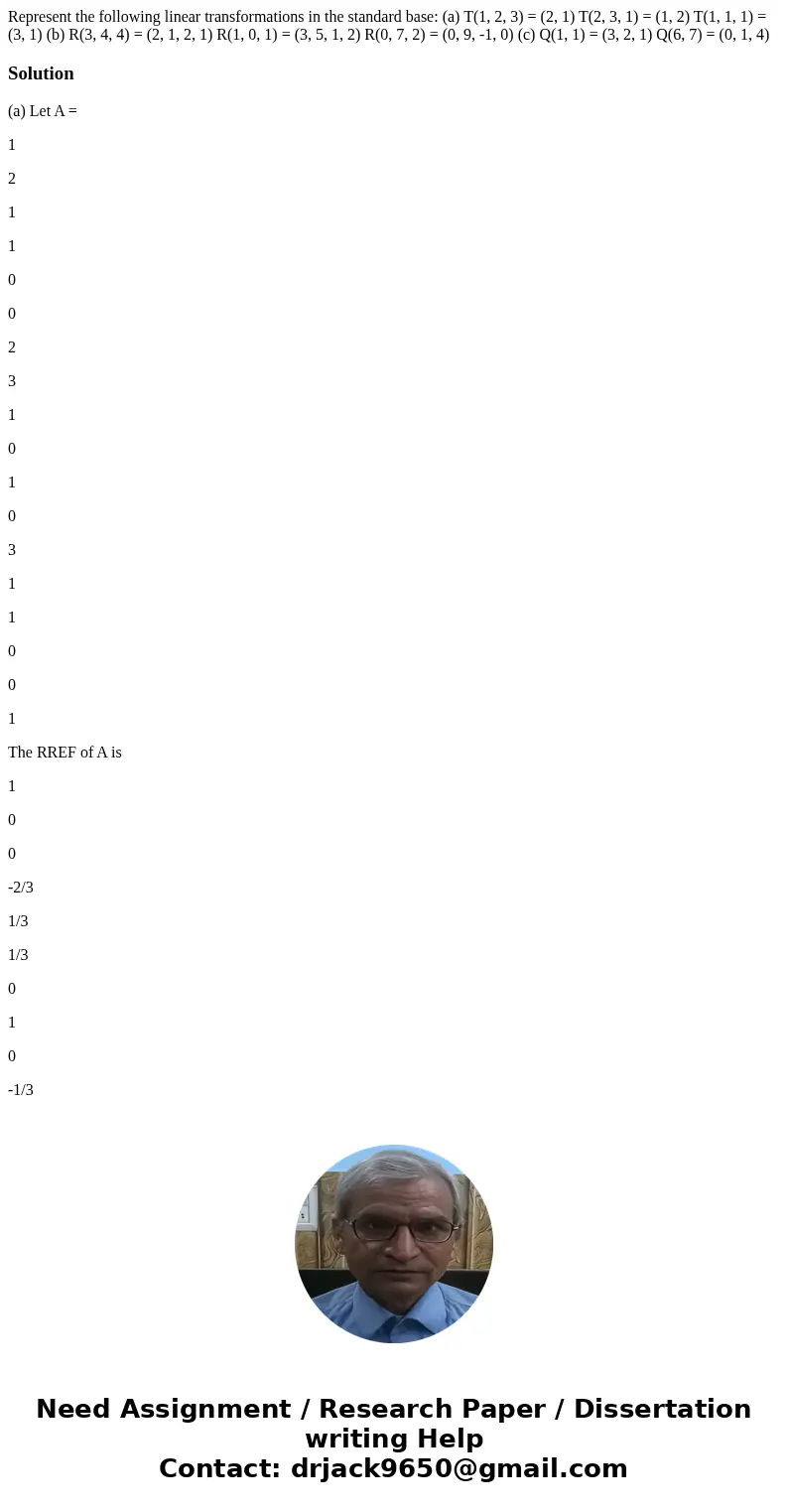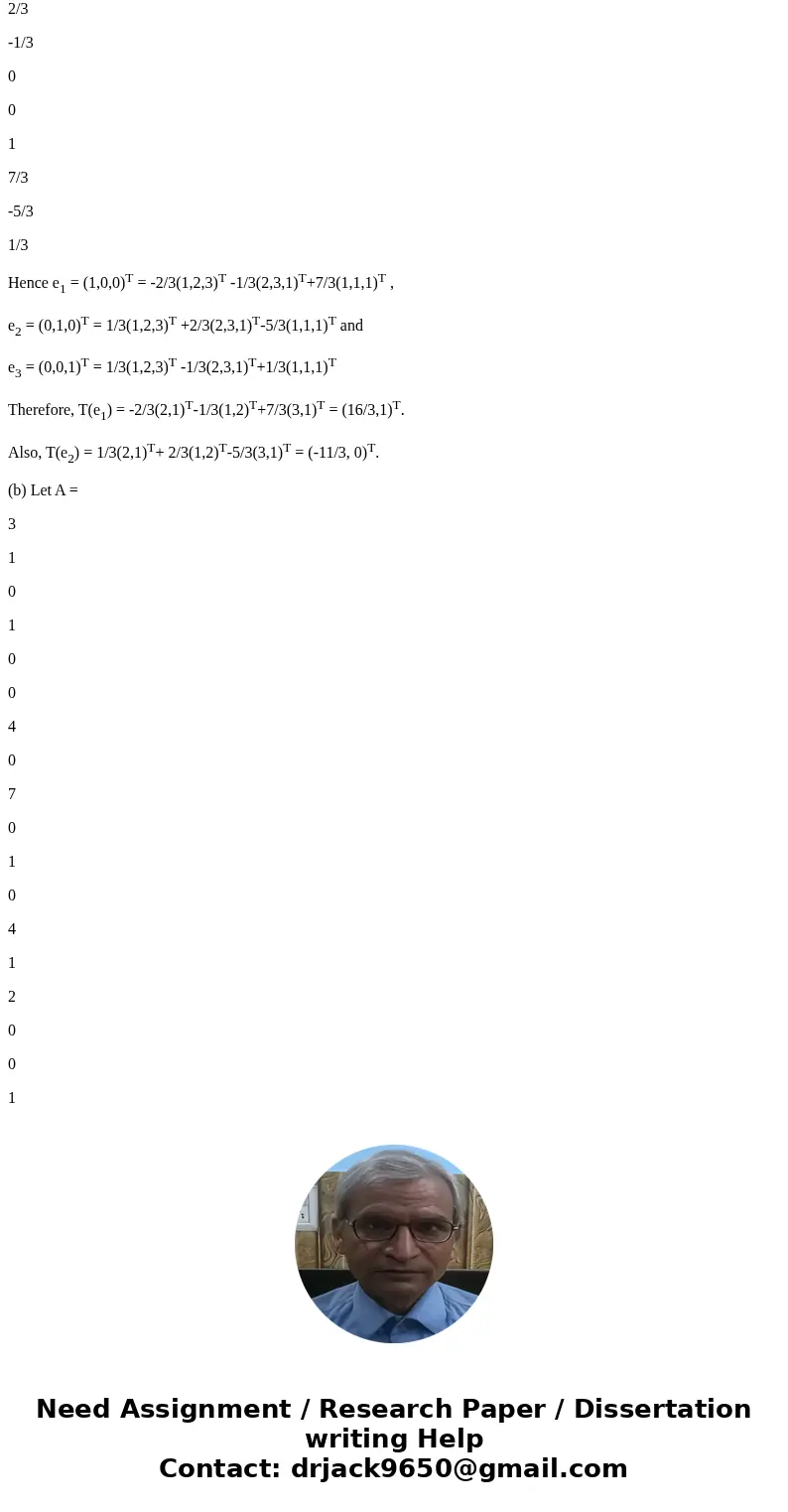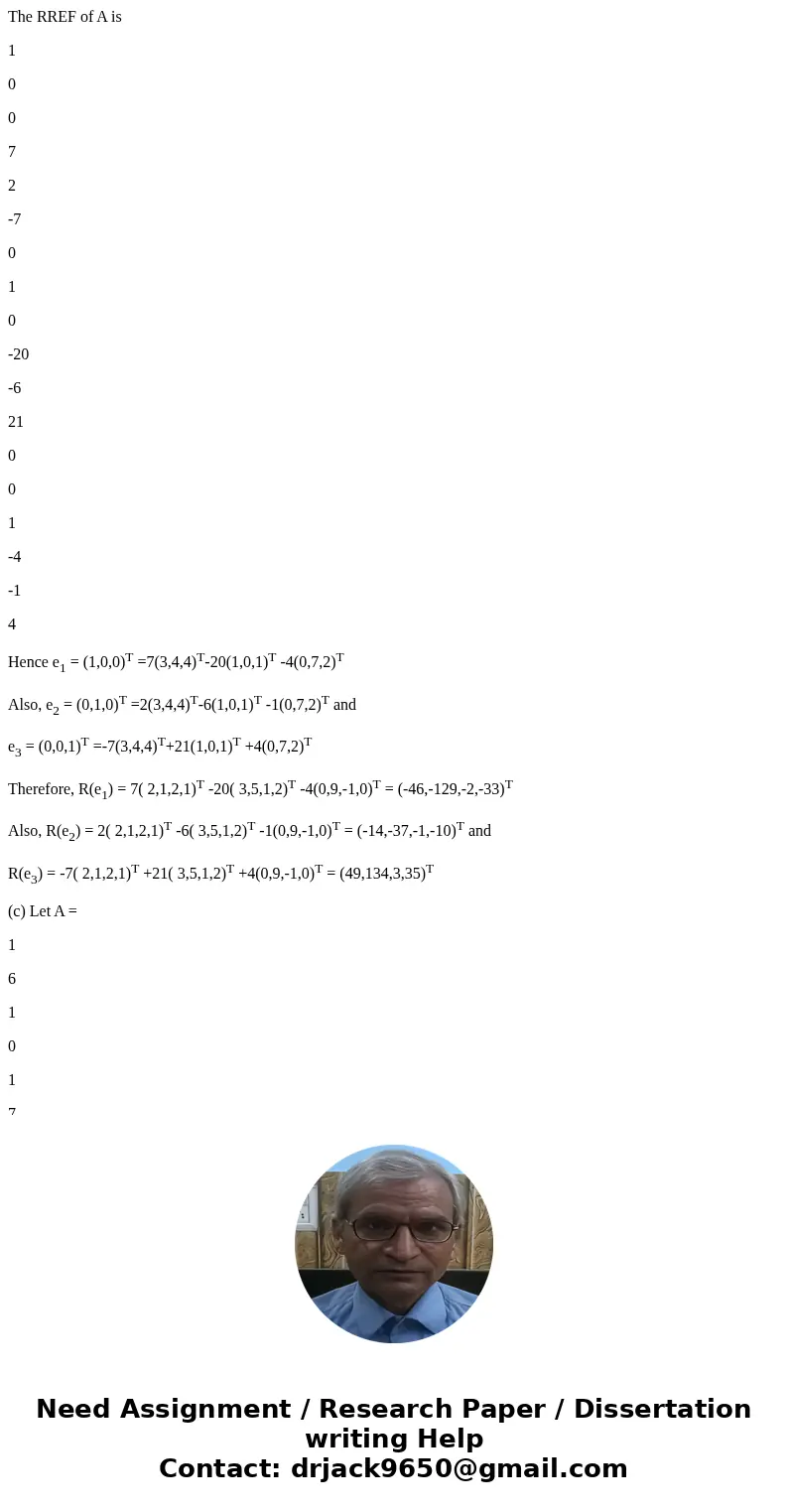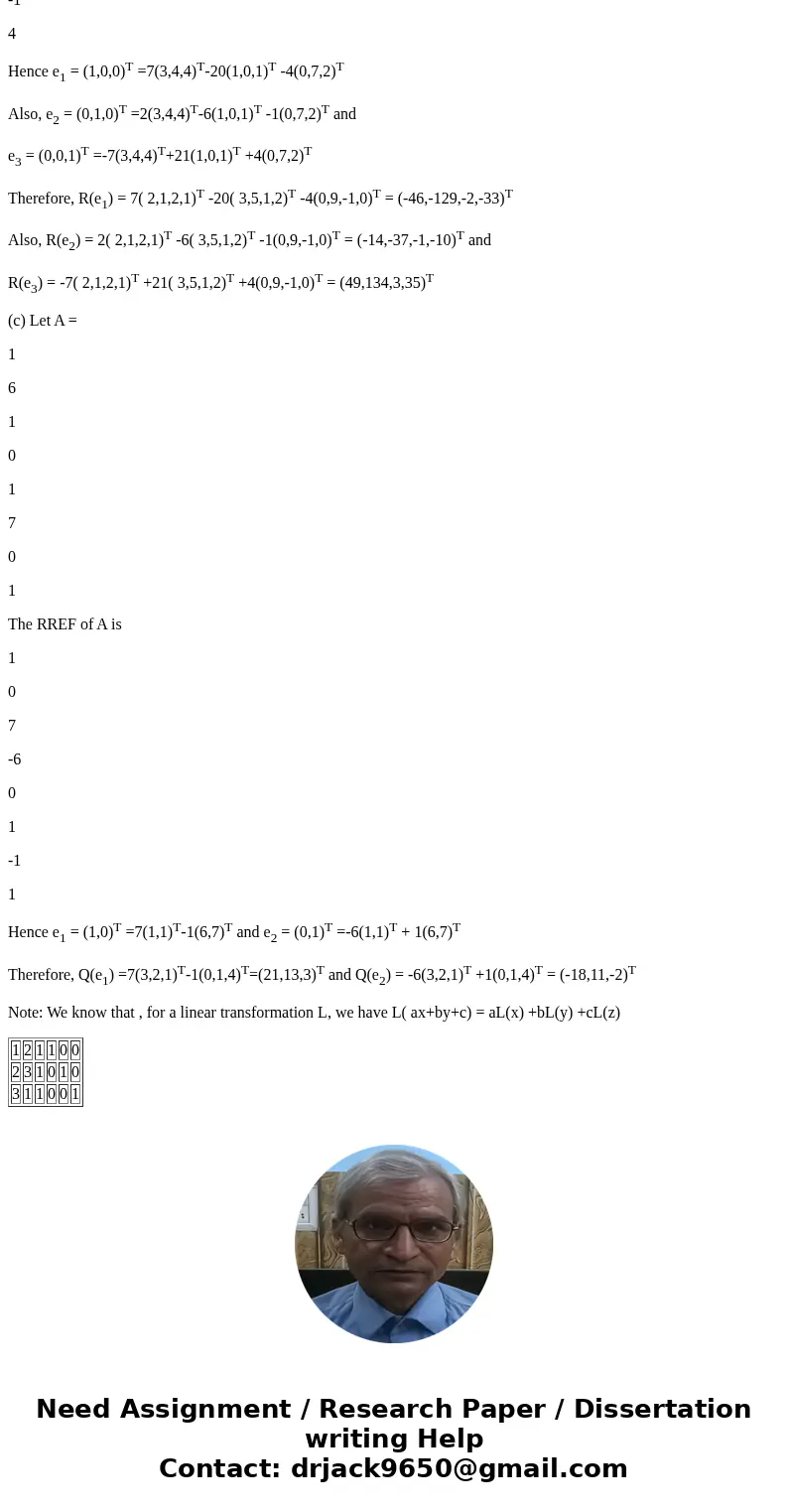Represent the following linear transformations in the standa
Solution
(a) Let A =
1
2
1
1
0
0
2
3
1
0
1
0
3
1
1
0
0
1
The RREF of A is
1
0
0
-2/3
1/3
1/3
0
1
0
-1/3
2/3
-1/3
0
0
1
7/3
-5/3
1/3
Hence e1 = (1,0,0)T = -2/3(1,2,3)T -1/3(2,3,1)T+7/3(1,1,1)T ,
e2 = (0,1,0)T = 1/3(1,2,3)T +2/3(2,3,1)T-5/3(1,1,1)T and
e3 = (0,0,1)T = 1/3(1,2,3)T -1/3(2,3,1)T+1/3(1,1,1)T
Therefore, T(e1) = -2/3(2,1)T-1/3(1,2)T+7/3(3,1)T = (16/3,1)T.
Also, T(e2) = 1/3(2,1)T+ 2/3(1,2)T-5/3(3,1)T = (-11/3, 0)T.
(b) Let A =
3
1
0
1
0
0
4
0
7
0
1
0
4
1
2
0
0
1
The RREF of A is
1
0
0
7
2
-7
0
1
0
-20
-6
21
0
0
1
-4
-1
4
Hence e1 = (1,0,0)T =7(3,4,4)T-20(1,0,1)T -4(0,7,2)T
Also, e2 = (0,1,0)T =2(3,4,4)T-6(1,0,1)T -1(0,7,2)T and
e3 = (0,0,1)T =-7(3,4,4)T+21(1,0,1)T +4(0,7,2)T
Therefore, R(e1) = 7( 2,1,2,1)T -20( 3,5,1,2)T -4(0,9,-1,0)T = (-46,-129,-2,-33)T
Also, R(e2) = 2( 2,1,2,1)T -6( 3,5,1,2)T -1(0,9,-1,0)T = (-14,-37,-1,-10)T and
R(e3) = -7( 2,1,2,1)T +21( 3,5,1,2)T +4(0,9,-1,0)T = (49,134,3,35)T
(c) Let A =
1
6
1
0
1
7
0
1
The RREF of A is
1
0
7
-6
0
1
-1
1
Hence e1 = (1,0)T =7(1,1)T-1(6,7)T and e2 = (0,1)T =-6(1,1)T + 1(6,7)T
Therefore, Q(e1) =7(3,2,1)T-1(0,1,4)T=(21,13,3)T and Q(e2) = -6(3,2,1)T +1(0,1,4)T = (-18,11,-2)T
Note: We know that , for a linear transformation L, we have L( ax+by+c) = aL(x) +bL(y) +cL(z)
| 1 | 2 | 1 | 1 | 0 | 0 |
| 2 | 3 | 1 | 0 | 1 | 0 |
| 3 | 1 | 1 | 0 | 0 | 1 |




 Homework Sourse
Homework Sourse